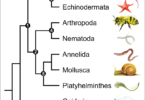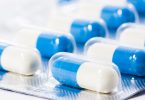MCQ ON PANCREAS class 12 for NEET | PANCREAS class 11 | MCQ PANCREAS with Answer | Check the below NCERT MCQ question for class 12 Biology based on the with Answers.
MCQ on PANCREAS class 12 Biology with answers were prepared based on the latest pattern.We have provided class 12 Biology MCQs question with Answers to help students understand the concept very well.
MCQ ON PANCREAS is useful for NEET / CSIR / UGC / CBSE / ICSE / AIIMS / EXAM / AFMC EXAM / STATE LEVEL MEDICAL EXAM 2022-23 , 2023-24
INTRODUCTION:-
Pancreas is a composite gland which acts as both exocrine and endocrine gland.
The endocrine pancreas consists of islets of langerhansi.
There are about 1to 2 million islets of langerhans in a normal human pancreas representing only one to two percent of pancreatic tissue.
The two main types of cells in the islet of langarhans are called Alpha -cells and beta – cells
The alpha – cells secret a hormone called glucagon while the beta cells secret insulin.
Glucagon is a peptide hormone and play an important role in maintaining the normal blood glucose levels.
Glucagon acts mainly on the liver cells and stimulates glycogenolysis resulting in an increased blood sugar hyperglycemia.
Endocrine glands lack ducts and hence are called ductless glands.
Their secretions are called hormones.
The classical definition of hormone as a chemical produced by endocrine glands and released into the blood and transported to a distantly located target organ has current scientific definition as follows:-
Hormones are non – nutrient chemical which acts as intercellular messengers and are produced in trace amounts.
The endocrine glands and hormone producing diffused tissues/ cells located in different parts of our body constitute the endocrine system.
Pituitary ,pineal, thyroid, adrenal , pancreas , parathyroid , thymus and gonàds are the endocrine bodies in our body.
The pituitary gland is located in a Bony cavity called sella tursica and is attached to thalamus by a stalk.It is divided anatomically into an adenohypophysis and neurophysis.
Adenohypophysis consists of two portions ,pars distalis and para intermedia.
The pars distalis region of pituitary, commonly called anterior pituitary produces , growth hormone (GH) , Prolactin (PRL) , thyroid stimulating hormone (TSH),
adrenocorticotrophic hormone (ACTH) , luteinizing hormone (LH) and follicle stimulating hormone (FSH).
Pars intermedia secrets only one hormone called melanocyte stimulating hormone (MSH).
Neurohypophysis also known as posterior pituitary, stores and release two hormones called oxytocin and vasopressin ,which are actually synthesized by the hypothalamus and are transported axonally to neurohypophysis.
MCQ ON PANCREAS class 12 for NEET
1. Which is a composite gland
(a) pancreas
(b) pituitary gland
(c) thyroid gland
(d) ovary
Ans (a) pancreas
2. Pancreas is a
(a) exocrine gland
(b) endocrine gland
(c) both a and b
(d) trachea
Ans. (c) both a and b
3. Alpha cells of islets of langerhans of pancreas secrets a hormone called
(a) glucagon
(b) stromal tissues
(c) insulin
(d) thyroid
Ans. (a) glucagon
4. Beta cells of islets of langerhans of pancreas secrets hormone
(a) Thyroid gland
(b) pituitary gland
(c) ACTH
(d) insulin
Ans.(d) insulin
5.Glucagon is a
(a) amino acid hormone
(b) peptide hormone
(c) starch
(d) fatty acid
Ans.(b) peptide hormone
6. Glucagon mainly acts on the
(a) liver cells
(b) pancreatic cells
(c) duodenum
(d) all the above
Ans.(a) liver cells
7. Which hormone stimulates the process of gluconeogenesis .
(a) insulin
(b) thyroxin
(c) glucagon
(d) Aldosterone
Ans.(c) glucagon
8. Glucagon is a
(a) hypoglycemia hormone
(b) hyperglycemic hormone
(c) hyperthyroidism
(d) hypothyroidism
Ans.(b) hyperglycemia
9.The peptide hormone which plays a major role in the regulation of glucose homeostasis.
(a) Insulin
(b) glucagon
(c) cortisol
(d) ACTH
Ans. (a) Insulin
10. Insulin stimulates conversion of glucose to glycog
(a) stunted growth
(b) abnormal skin
(c) mental retardation
(d) all the above
Ans. (d) all the above
11.Disease caused by lack of insulin hormone
(a) diabetes insipidius
(b) diabetes mellitus
(c) Addison
(d) creatinism
Ans.(b) diabetes mellitus
12. Which is mixed gland ?
(a) endocrine gland
(b) exocrine gland
(c) both a and b
(d) pituitary gland
Ans . (c) both a and b
13. Which hormone lower the glucose blood levels?
(a) insulin
(b) glucagon
(c) somatostatin
(d) thyroxin
Ans.(a) Insulin
ALSO READ:-
● YOU CAN WATCH BIOLOGY SIR Youtube channel
14. Which hormone increase the glucose blood level ?
(a) insulin
(b) glucagon
(c) both a and b
(d) somatostatin
Ans. (b) glucagon
15. Which hormone trigger the breakdown of glycogen into glucose in the liver cells
(a) glucagon
(b) insulin
(c) parathyroid gland
(d) all the above
Ans.(a) glucagon
16. Which organ helps in the controling blood glucose levels.
(a) pancreas
(b) stomach
(c) small intestine
(d) large intestine
Ans.(a) pancreas







Leave a Comment